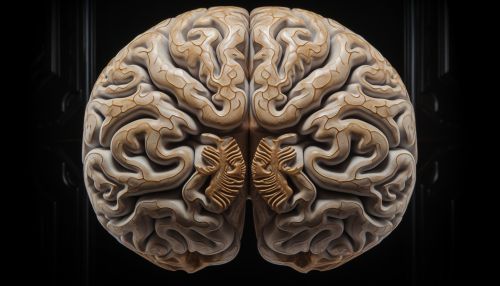Middle frontal gyrus
Anatomy
The Middle frontal gyrus is a part of the frontal lobe in the human brain. It is located between the superior frontal gyrus and the inferior frontal gyrus. The middle frontal gyrus, like other structures in the brain, is involved in a variety of cognitive functions.


Structure
The middle frontal gyrus is a gyral region of the frontal lobe, which is the largest of the brain's four lobes. It is situated in the dorsolateral part of the frontal lobe, between the precentral gyrus and the superior and inferior frontal gyri. The middle frontal gyrus is further divided into a lateral and a medial part by the superior frontal sulcus.
Function
The middle frontal gyrus plays a crucial role in many cognitive functions, including working memory, attention, and decision making. It is also involved in motor function, as it is part of the premotor cortex and the dorsolateral prefrontal cortex.
Working Memory
The middle frontal gyrus is one of the primary areas involved in the neural network of working memory. Working memory is a cognitive system that holds and manipulates information over short periods. It is essential for tasks such as comprehension, learning, and reasoning.
Attention
The middle frontal gyrus is also involved in the control of attention. It is part of the dorsal attention network, a system of areas in the brain that controls voluntary (top-down) attention. This network is activated when we focus our attention on a specific task or stimulus.
Decision Making
The middle frontal gyrus is involved in decision-making processes. It is part of the prefrontal cortex, an area of the brain that is responsible for planning complex cognitive behavior, personality expression, decision making, and moderating social behavior.
Clinical Significance
Damage to the middle frontal gyrus can lead to a variety of cognitive deficits, including impairments in working memory, attention, and decision making. It can also lead to motor deficits, as this area is involved in planning and executing movements.
